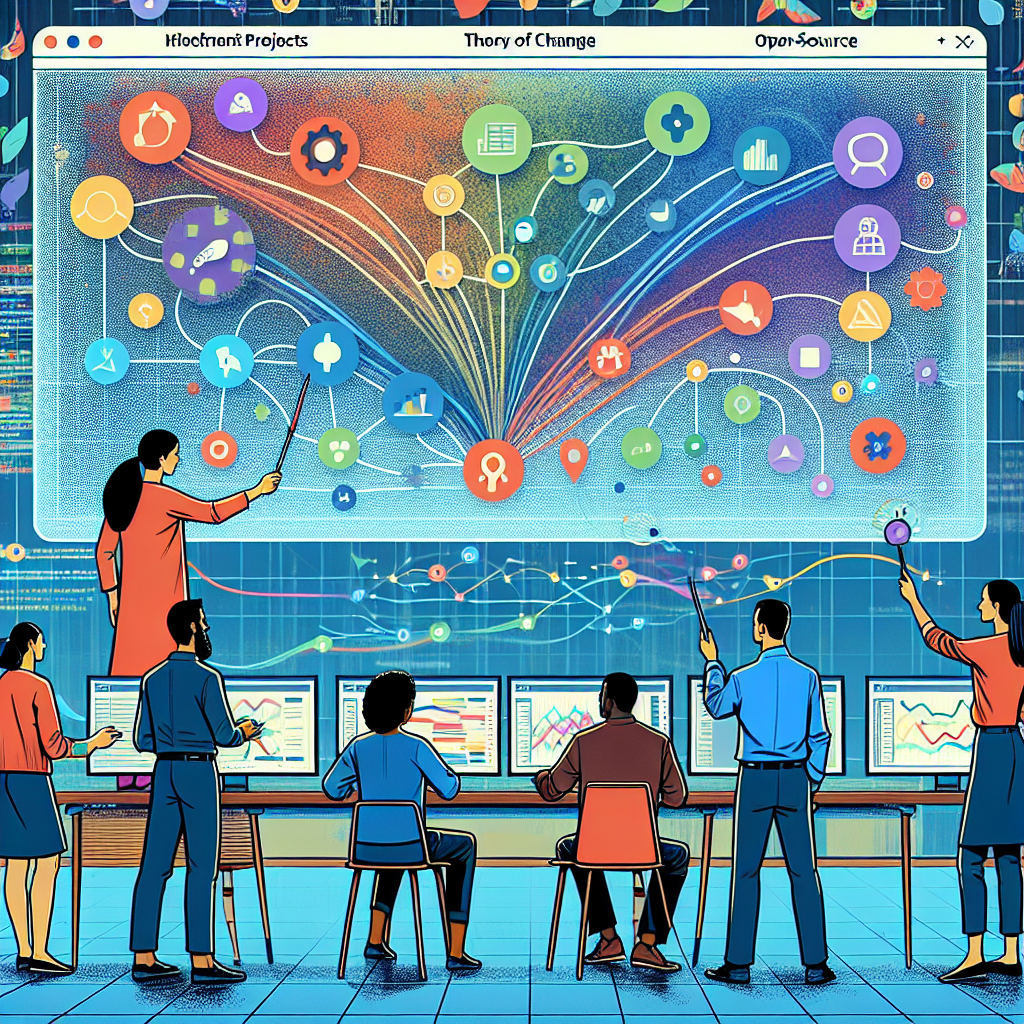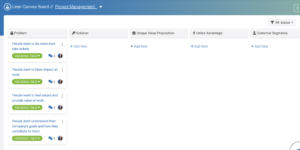Mapping Impact with Leantime: How to Track Theory of Change Projects in Open Source Project Management
- Implementing a systematic approach to track project progress, such as a theory of change, can significantly enhance impact.
- The Theory of Change (ToC) provides a structured framework to connect activities to outcomes.
- Leantime’s open-source platform offers inclusive tools for diverse teams, particularly beneficial for neurodivergent individuals.
- Regular assessment of assumptions and adapting strategies is crucial for successful impact management.
- Real-world applications demonstrate the effectiveness of combining ToC with accessible project management tools.
Understanding the Theory of Change Model: Beyond Traditional Project Management
The Theory of Change model fundamentally shifts how we think about project management. While traditional approaches focus on completing tasks and meeting deadlines, ToC asks a deeper question: “How and why will our specific activities lead to the transformation we seek?”
At its core, the Theory of Change creates a logical chain connecting five key elements:
- Inputs represent the resources you invest—time, funding, personnel, and expertise. These feed into Activities, the specific interventions or tasks your team undertakes. Activities generate Outputs—the direct, tangible products of your work like training sessions delivered or resources created.
- But here’s where ToC differs from conventional project tracking: Outputs aren’t the end goal. They lead to Outcomes—the short- and mid-term behavior changes, knowledge gains, or capacity improvements in your target population. Finally, Impact represents the long-term, systemic change you’re ultimately working toward.
Woven throughout this chain are Assumptions—the hypotheses about how and why each step will lead to the next—and Risks that could disrupt your pathway to change.
For non-profits seeking grant funding, academic researchers measuring intervention effectiveness, or community organizers working toward social change, this framework provides the structured thinking that stakeholders increasingly demand. It transforms projects from “we’ll do these activities and hope for the best” to “we’ll systematically test whether our specific interventions create the changes we predict.”
Why Traditional Project Management Falls Short for Change Initiatives
Most project management tools excel at task completion but struggle with the complexity of change work. Enterprise solutions like Microsoft Project or Smartsheet can cost thousands annually—prohibitive for grassroots organizations or academic departments operating on shoestring budgets.
More fundamentally, traditional linear project tracking misses the iterative, assumption-testing nature of impact work. When you’re implementing a community health program, you need to continuously evaluate whether your activities are actually changing behaviors, whether your assumptions about community needs were accurate, and how external factors might be affecting your outcomes.
Standard tools also fall short in supporting the collaborative, transparent approach that effective change work requires. Impact projects typically involve diverse stakeholder groups—community members, academic partners, funders, and implementation teams—each needing different views of progress and different ways to contribute feedback.
For neurodivergent team members, who often think in non-linear patterns and benefit from flexible organizational systems, rigid project hierarchies can actually hinder rather than help productivity and engagement.
Leantime’s Theory of Change Advantage: Open Source Meets Inclusive Design
Leantime addresses these limitations through its unique combination of open-source accessibility and neurodiversity-focused design principles. As an open-source platform, Leantime eliminates licensing costs that exclude many organizations from sophisticated project management tools. More importantly, it gives teams complete data ownership and control—crucial for sensitive community work or research involving human subjects.
The platform’s development philosophy centers on creating tools that work for different neurotypes. This means clear visual hierarchies that help users with ADHD focus on priority tasks, flexible organizational systems that accommodate various thinking styles, and interfaces designed to reduce cognitive load rather than overwhelm users with complexity.
For Theory of Change implementation, these design principles translate into practical advantages. Visual learners can grasp complex cause-and-effect relationships through Leantime’s roadmapping features. Detail-oriented team members can track granular progress while big-picture thinkers maintain focus on long-term impact. Team members with executive function challenges benefit from clear task hierarchies and milestone tracking.
Setting Up Your Theory of Change Project in Leantime: A Step-by-Step Approach
Phase 1: Structuring Your Change Logic
Begin by mapping your Theory of Change using Leantime’s goal hierarchy system. Create your ultimate impact as a top-level goal—for example, “Increase literacy rates in Target Community by 25% over three years.” Break this down into intermediate outcomes as milestones: “Community members demonstrate improved reading skills,” “Local tutoring capacity expanded,” and “Family engagement in literacy activities increased.”
Use Leantime’s roadmap feature to visualize these connections. Unlike static flowcharts, this creates a living document that teammates can update as you test and refine your change logic. The timeline view helps stakeholders understand both the sequencing of changes and the patience required for long-term impact.
Set up milestones corresponding to key outcome measurement points. Rather than just tracking activity completion, create milestones like “Pre-intervention assessment completed” or “6-month behavior change survey conducted.” This keeps teams focused on measurement and learning, not just doing.
Phase 2: Managing Activities and Resource Allocation
Transform your planned activities into Leantime’s task management system. Create task lists for different intervention types—direct service delivery, community outreach, partnership development—and use the Kanban board view to visualize workflow stages from planning through implementation to evaluation.
Leantime’s assignment features support the collaborative nature of impact work. Tasks can be assigned to team members, partner organizations, or community volunteers, with clear visibility into who’s responsible for what. Custom fields allow you to track resource allocation, documenting time investment, budget utilized, and materials consumed for later analysis.
For teams managing multiple project components simultaneously—common in complex change initiatives—Leantime’s project dashboard provides an overview while allowing deep dives into specific intervention areas.
Phase 3: Tracking Assumptions and Supporting Learning
Theory of Change success depends on systematically testing your underlying assumptions about how change occurs. Use Leantime’s notes and custom field features to document key assumptions linked to specific activities and outcomes. For example, you might note the assumption “Community members will attend weekly literacy sessions if provided childcare” alongside related tasks and outcome measurements.
Create a dedicated risk log using Leantime’s risk management capabilities. Document both internal risks (staff turnover, funding delays) and external factors (community conflicts, policy changes) that could affect your change pathway. Link risks to specific outcomes or activities so team members understand potential impacts on their work areas.
Establish regular review cycles using Leantime’s reporting features. Schedule monthly assumption review meetings where teams assess which hypotheses are proving accurate, which need revision, and how findings should influence activity modifications.
Real-World Applications: Theory of Change in Action
Community Education Initiative
A neighborhood literacy program used Leantime to track their pathway from tutoring sessions (activities) to improved reading scores (outputs) to increased school engagement (outcomes) to long-term educational attainment (impact). They discovered that their assumption about optimal session frequency was incorrect—participants showed better progress with twice-weekly rather than weekly sessions—and used Leantime’s flexible scheduling to quickly adapt their approach.
Academic Policy Research
University researchers studying housing policy interventions structured their three-year longitudinal study in Leantime. They mapped data collection activities to specific research outputs, connected findings to policy recommendations, and tracked how recommendations influenced actual policy changes. The visual roadmap helped them communicate progress to funders and identify gaps in their evidence chain.
Open Source Community Development
A software community working to increase diversity in tech used Theory of Change principles to move from coding bootcamps (activities) to skill development (outputs) to job placement (outcomes) to industry culture change (impact). Leantime’s collaborative features enabled mentors, participants, and industry partners to track progress and share feedback throughout the pipeline.
Advanced Features for Impact Management
Leantime’s dashboard customization allows teams to create stakeholder-specific views of progress. Board members might see high-level outcome trends, while implementation teams focus on activity completion rates. Funders can access impact measurement data while community partners view engagement metrics.
The platform’s integration capabilities support sophisticated data analysis. Connect Leantime to survey tools for outcome measurement, financial systems for cost-per-impact calculations, or analytics platforms for deeper trend analysis. This creates feedback loops that inform both tactical adjustments and strategic pivots.
Timeline visualization helps teams and stakeholders understand the patience required for meaningful change. Map short-term outputs against longer-term outcome expectations, helping everyone maintain realistic expectations.






